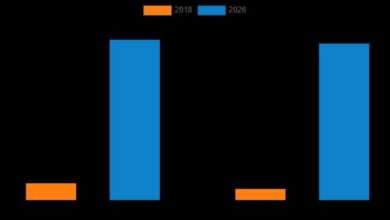1 No-Brainer Artificial Intelligence (AI) Stock to Buy With $320 and Hold for 10 Years

Artificial intelligence is changing the way businesses need to think about cybersecurity.
A few months ago, cybersecurity giant Palo Alto Networks (PANW 0.93%) said it was observing a tenfold increase in email-based phishing attacks compared to last year. The reason? Generative artificial intelligence (AI) has accelerated the rate at which malicious actors can craft realistic content to trick employees into handing over sensitive information.
But that’s only one way AI is shifting the threat landscape, and Palo Alto is concerned that many companies don’t have adequate protection. To address this, the cybersecurity provider is weaving AI into many of its existing products to make them faster and more accurate, and it continues to launch tools to protect businesses that might be experimenting with AI themselves.
Here’s why investors with some idle cash — money they don’t need for immediate expenses — might want to consider allocating $320 to Palo Alto stock and holding it for the next decade.
Image source: Getty Images.
AI is creating new risks, and that spells opportunity for Palo Alto
Palo Alto’s product portfolio is split into three platforms: cloud security, network security, and security operations, with AI playing an increasingly important role across each of them. Palo Alto says more than 90% of security operations centers (SOC) within companies are still governed by human-led processes, which means roughly 23% of incidents go uninvestigated.
As hackers increasingly rely on AI to mount automated attacks, that number will only grow because human managers simply can’t keep up with the workload. In fact, one of Palo Alto’s customers in the financial services industry recently embarked on a transformation plan because it couldn’t meet its security objectives despite having a staff of 40 in its SOC.
That customer signed up to use XSIAM, Palo Alto’s AI-driven SOC management platform that was launched just 18 months ago. It has delivered remarkable outcomes for other clients so far, including one service-based business that reduced its mean time to remediate (the time it takes to rectify security incidents) from three days to just 16 minutes. One other customer in the healthcare industry now resolves 90% of incidents autonomously, up from just 10% prior to adopting XSIAM.
While AI attacks clearly pose a growing risk to businesses, there is another concern. Palo Alto estimates 50% of employees in most companies are already boosting their productivity by using AI and large language models (LLMs), which are often trained on sensitive internal data, adding a new attack surface for hackers to target. Plus, there is also a risk that hackers can gain control of a company’s LLMs and use it to generate malicious content to strike the organization from within.
Solving this problem starts with a unified approach to data security across the software stack. Palo Alto recently launched AI-powered tools that shine a light on sensitive data wherever it appears within the organization to help prevent leaks. Specifically, AI Access Security tracks the use of generative AI applications among employees and improves visibility over the level of risk they pose.
Palo Alto’s revenue growth is slowing, but there is a good reason
Palo Alto generated $2 billion in revenue during the fiscal 2024 third quarter (ended April 30), which was a 15% increase from the year-ago period. That growth rate represented a deceleration both sequentially and year over year, which is typically viewed unfavorably by investors. Logically, it’s always better to see a company’s growth steadily picking up instead.
The cybersecurity industry has always been somewhat fragmented because few providers truly cover all bases, which means businesses buy software from multiple vendors to meet their needs. Palo Alto is shifting toward “platformization,” which means it wants to be the one-and-only provider of cybersecurity tools for its customers.
Palo Alto says clients who use all three of its platforms have a lifetime value more than 40 times larger than those using just one, so this strategy is an absolute no-brainer over the long term.
However, it creates short-term headwinds because most large organizations are locked into multiyear contracts with their cybersecurity providers. To win their business, Palo Alto is offering fee-free periods until their existing agreements expire, upon which time they will become paying Palo Alto customers.
Naturally, this is hurting the company’s revenue in the short term, and management says that could last 12 to 18 months. However, investors who are willing to wait could be handsomely rewarded.
Why Palo Alto stock is a long-term buy
Some of the aforementioned rewards are already apparent. Palo Alto expects to deliver $8 billion in total revenue for fiscal 2024 (which wraps up at the end of July), which would represent growth of 16% compared to fiscal 2023.
However, the company expects that to include $4.1 billion in annual recurring revenue from its next-generation security (platformization) customers. That will represent significantly faster growth of 39%. In fact, Palo Alto is aiming to more than triple that figure to $15 billion by 2030, highlighting the potential of its shift toward platformization.
AI is the big wild card. Wall Street forecasts suggest the technology will add anywhere between $7 trillion to $200 trillion to the global economy in the coming decade, which will likely be accompanied by a rapid expansion in cybersecurity spending. Successful cyberattacks not only deal significant financial damage to businesses, but they also cause reputational harm that can take years to repair.
Palo Alto aims to fulfill the cybersecurity needs of the world’s largest organizations. Investors might do well to own Palo Alto stock as the threat landscape becomes increasingly complex in the coming decade and beyond.



